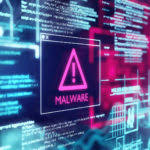The Reality of Malware Unmasking the Digital Battleground.
The word “malware” conjures images of an annoying computer virus, a pop-up warning, or perhaps a spam email. But the reality of malware in the 21st century is far more sinister, pervasive, and destructive than most imagine. It’s a relentless, evolving threat at the heart of a global digital conflict, fueled by greed, geo-political ambition, and the relentless pursuit of information. This isn’t just about single “bugs” anymore; it’s a sophisticated ecosystem of unethical black hat hacking, advanced weaponry, and a complex history of digital crime.
Malware From Pranks to Pandemics: A Brief History of Internet Crime
The roots of internet crime stretch back decades. Early computer viruses like the Elk Cloner in 1982 were often benign curiosities or pranks, demonstrating a hacker’s prowess. The Morris Worm in 1988, however, began to hint at the destructive potential, bringing down a significant portion of the nascent internet. These early forays laid the groundwork for the commercialization and weaponization of malicious code. What began as individual exploits quickly evolved into organized criminal enterprises, setting the stage for the financially motivated attacks we see today.
The Scourge of Destructive Ransomware
Few threats have dominated recent cybersecurity news as much as destructive ransomware. Once a niche concern, it has exploded into a multi-billion-dollar industry that brings entire organizations to their knees. Modern cyber criminals behind these attacks often operating from safe havens and leveraging sophisticated toolkits don’t just encrypt data; they exfiltrate it first, threatening to leak sensitive information if a ransom isn’t paid.
The tales are chilling: hospitals forced to divert ambulances, city governments crippled, critical infrastructure compromised, and businesses losing decades of data. The Colonial Pipeline attack in 2021, which led to fuel shortages across the US East Coast, starkly illustrated how digital extortion can have immediate, tangible impacts on the physical world. These attacks are meticulously planned, often involving initial access through phishing, exploiting known vulnerabilities, or even buying access from initial access brokers on dark web forums. Payments are almost exclusively demanded in cryptocurrency thefts, providing a layer of pseudo-anonymity that makes attribution and recovery incredibly difficult.
Elite Adversaries: The APTs and State-Sponsored Actors
Beyond the financially motivated groups lie the most formidable and patient threats: Advanced Persistent Threats (APTs). These are not your average cyber criminals; they are highly skilled, well-resourced groups, often operating under the patronage or direct control of state-sponsored foreign actors. Their goals extend beyond monetary gain to espionage, intellectual property theft, critical infrastructure sabotage, and geopolitical destabilization.
Technical deep dives into APT operations reveal a level of sophistication rarely seen elsewhere. They employ custom-built malware, exploit spyware zero-days (previously unknown vulnerabilities in software), and maintain long-term presence within victim networks. Groups like Russia’s Fancy Bear (APT28), China’s APT41, or North Korea’s Lazarus Group have been linked to election interference, massive data breaches, and the disruption of critical national services. Their campaigns are characterized by stealth, persistence, and a willingness to adapt their tactics to bypass even the most robust defenses. Their operations are a true digital cat-and-mouse game, with the world’s leading intelligence agencies and cybersecurity firms locked in a constant battle to detect and understand their next move.
The Evolving Face of Malware: Beyond the Virus
While the term “computer virus” is still used broadly, the reality is that malware encompasses a vast and diverse arsenal:
- Trojans: Disguised as legitimate software, they create backdoors for remote access.
- Worms: Self-replicating and spreading across networks without human interaction.
- Spyware: Designed to monitor user activity, collect personal data, and relay it to attackers. This includes highly targeted mobile spyware that can access calls, messages, and location data.
- Adware: Floods users with unwanted advertisements, often bundled with legitimate software.
- Rootkits: Tools that enable stealthy, persistent control over a computer by hiding their presence and other malicious processes.
- Botnets: Networks of compromised computers (“bots”) controlled by a single attacker, used for massive spam campaigns, DDoS attacks, or cryptocurrency mining.
- Info-Stealers: Malware specifically designed to harvest credentials, financial information, and other sensitive data.
The common thread among all these is unethical and black hat hacking the deliberate misuse of technology to exploit vulnerabilities, bypass security measures, and achieve malicious objectives. It’s a continuous arms race where defensive measures are constantly being developed, only for new offensive techniques to emerge, often leveraging social engineering alongside technical exploits to trick unsuspecting users or administrators.
The Unseen Malware Battle: Technical Deep Dives and Future Threats
Understanding the reality of malware requires more than just knowing its names; it demands a glimpse into the technical deep dives that cybersecurity researchers undertake. This involves reverse engineering malicious code, analyzing network traffic patterns, dissecting exploit chains, and tracing attack attribution. It’s about understanding how command-and-control (C2) servers operate, how data is exfiltrated, and how malware achieves persistence on compromised systems.
The future of malware promises even greater complexity. We are already seeing the early stages of AI-powered malware, self-modifying code, and attacks targeting the Internet of Things (IoT) devices, blurring the lines between the digital and physical worlds. The rise of supply chain attacks, where legitimate software updates are poisoned with malware, further complicates detection and defense.
The Ongoing Reality
The reality of malware is that it’s an ever-present, ever-evolving threat that touches every aspect of our digital lives. From nation-states seeking geopolitical advantage to organized crime syndicates pursuing massive profits, the digital underworld is a bustling ecosystem of innovation, exploitation, and destruction. Protecting ourselves and our societies requires constant vigilance, robust security measures, international cooperation, and a clear understanding that the digital battleground is a harsh, unforgiving place where the line between the virtual and the real continues to blur.








